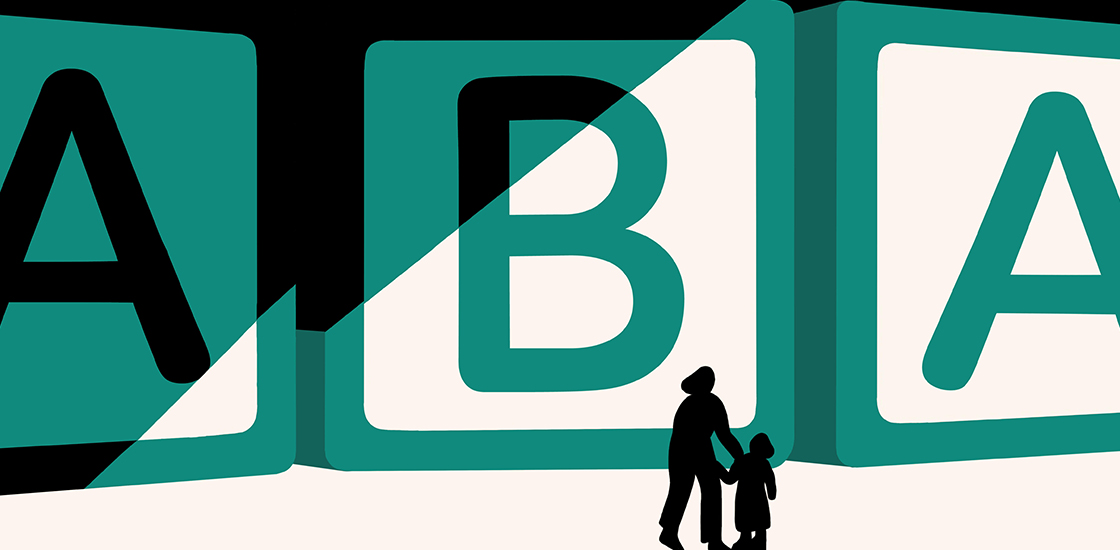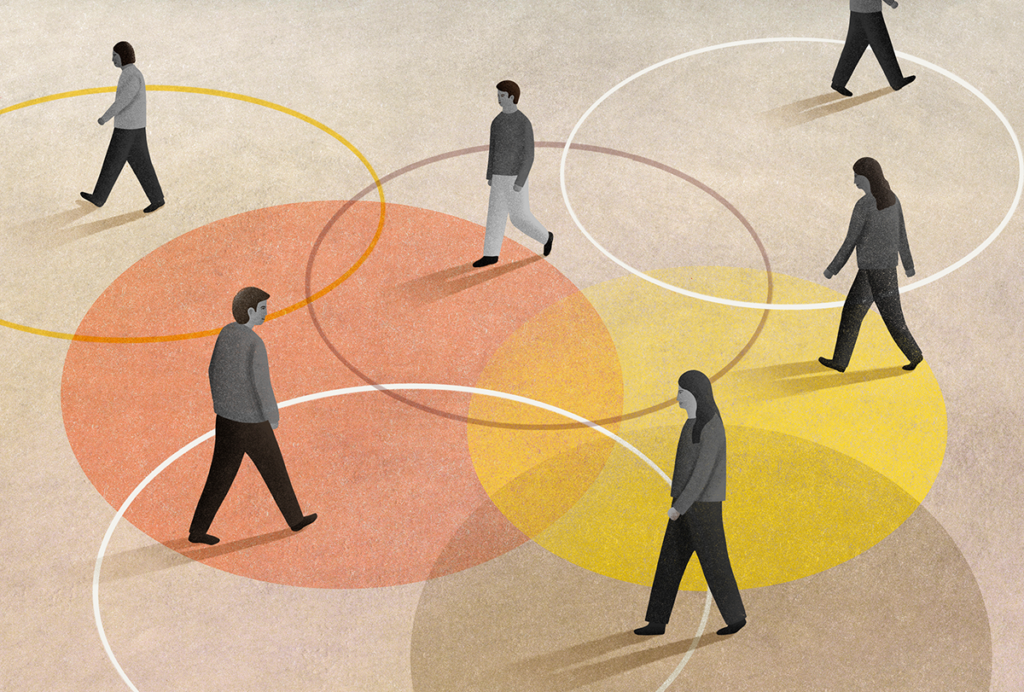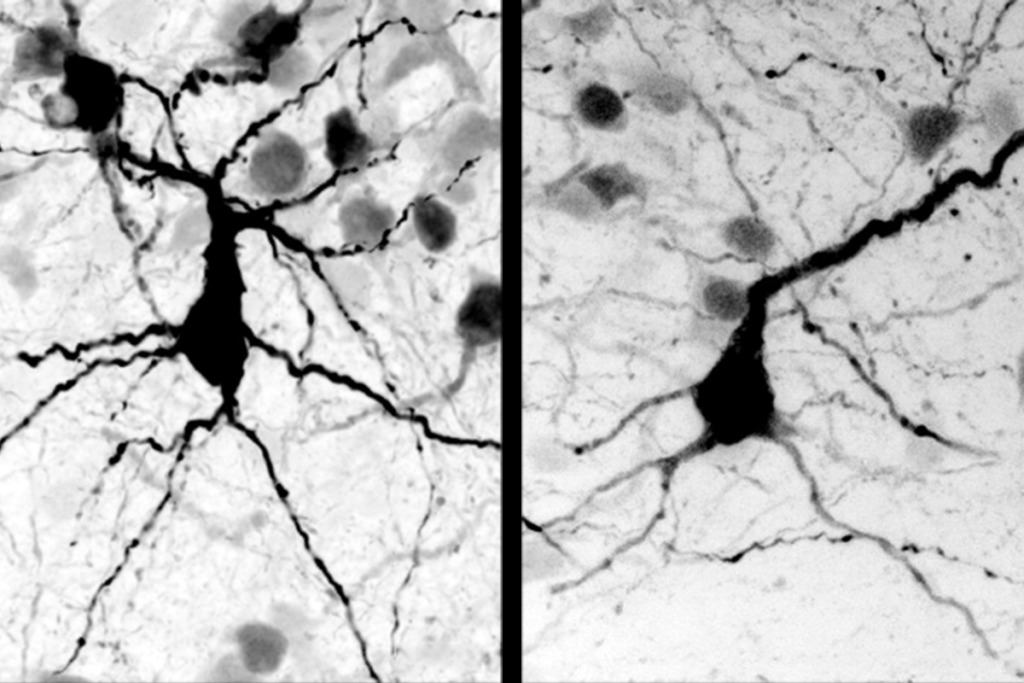I had been working in applied behavior analysis (ABA) for almost a decade when my own daughter was diagnosed with autism at age 4. At that point, she was having multiple meltdowns a day, turning over furniture, hurting herself and acting aggressively toward her younger brother. She was struggling to communicate, and my husband and I felt like we were failing her as parents. I had an infant at the time, was pregnant with my third, and was feeling desperate for help. ABA seemed the obvious next step for our daughter, and our family. I knew I should not analyze her behavior myself, no matter my training: I needed an objective assessment from someone outside our circle.
In exploring the field as a parent, I came across a recommendation to join the group “Ask Me, I’m Autistic” on Facebook. I filled out the membership questions, explaining that I’m a board-certified behavior analyst (BCBA) and parent, and that I was hoping to learn more from the autistic community. An administrator of the group messaged me to say that the group does not allow behavior analysts in unless they are prepared to consider leaving the field of ABA. I was told members would be uncomfortable with my presence in the group, given my profession. I found other pockets of criticism online, where ABA was described as abusive and traumatizing. This was not the field I knew and loved, and not the way I believed I was practicing and teaching others to practice.
I felt confused and defensive. Yet I continued my search for ABA services for my daughter. I reached out to multiple agencies in my area. Some had long waitlists because of staffing issues. Some didn’t take my insurance. Others had available slots only in the middle of the day, when our daughter was in preschool and my husband and I were at work. I was disheartened by the lack of compassion in these responses, and some agencies never replied at all.
We finally found a spot at one of the biggest ABA service providers in the country. We felt we needed only in-home support, but their model required our daughter to come into the clinic for the bulk of her services. We gave in, thinking something was better than nothing. Still, getting to actual services was painfully slow: We started the paperwork and insurance authorizations in November, and our first day of services was the following May.
Our experience did not improve from there. Nobody asked what had led us to seek services. No one asked what our goals were. Instead, my daughter was assessed on a series of generic skills, and she was scheduled to work on tasks we didn’t find important, such as matching and labeling. We felt more time was spent checking the required boxes for insurance reimbursement than on crafting services individualized for our daughter and family. Months into receiving services — and a full nine months after starting to work with the agency — we still did not have a plan for the behaviors we were most concerned about.
The agency also seemed to be struggling with staffing. When a new behavior technician showed up at my home, I asked her how long she had been in the field. She told me it was her first day. After our first three weeks with the agency, and just as my daughter seemed to be getting comfortable, they switched her behavior technicians.
I
stumbled upon the field of ABA accidentally, when I took an introductory course as an undergraduate student. I was paired with the family of a 3-year-old receiving ABA services and watched in amazement as he learned new skills. He replaced his hitting, kicking and screaming with functional communication, such as being able to request items, note his favorite activities and ask for help. I fell in love with the science of behavior. I found a job to be trained as a behavior technician and continued my education until I became a BCBA. I have since worked as a consultant in homes and schools, as a clinical director, and as an educator at the University of Washington in Seattle.The services my family received did not align with what I knew ABA could do. The very nature of ABA requires that it is individualized. It is meant to be applied toward meaningful goals for the individual and family. We were receiving standardized services based off assessments we completed on a computer. By now, this was enough for me to doubt the profession I had practiced for 10 years, and we pulled our daughter from the agency.
I could not believe, though, that there was something inherently wrong with this natural science. The science of behavior is welcomed in myriad other fields. Businesses use it to increase employee work performance and attendance. The health and fitness industry uses it to build healthy eating and exercise habits. ABA principles have been used to increase the use of seat belts, to help patients adhere to medical protocols and to boost recycling. I apply the principles myself to increase my water intake, complete my chores at home and get through my work tasks.
I began to think about applying ABA principles to my daughter’s environment based on my own training. We started using it in our parenting and embedded support strategies into her school day. We focused on her communication skills. Over time, her fear of school decreased, her aggression greatly subsided, and she was happier than she had been in years.
Along the way, I rediscovered my love for applied behavior analysis as a science. Yet it cannot be denied that something is wrong with its current application, and I’m not the only one to realize this. A colleague and I formed the Coalition for the Reform of Applied Behavior Analysis, and it gained hundreds of members within weeks. Collectively, we recognize that we must change the application of our science so that it is client-centered, neurodiversity-affirming and equitable. Client services should be focused on the individual instead of using cookie-cutter approaches to save money. Services should be delivered to clients in daycares, schools and homes, rather than forcing clients to spend hours in clinics. Services need to be reimbursed, certainly, but assessments and support plans should not be written solely to appease insurance companies. Those in the field need constant training and continuing education, and we must improve supervision of both behavior technicians and early-career BCBAs. And, for certain, we need to listen to autistic voices and honestly hear their criticism.
I still have days when I wonder if I should just leave the field. It can be exhausting to fight for reform within the field while advocating in support of the science to the critics outside of it. I stay because I believe it’s worth the fight. I have no doubt that the science can be applied in ways that work to improve the quality of life of the people we serve. My daughter is almost 10 now; she is a spunky and creative child. We continue to embed ABA principles into the daily lives of everyone in our family. Recently, we have applied ABA to help our children work through sibling rivalry, participate in family chores and make dental visits less aversive. The current application of ABA in autism is flawed, and the businesses behind it are troubled. But its delivery can be reformed and improved without abandoning the science.






